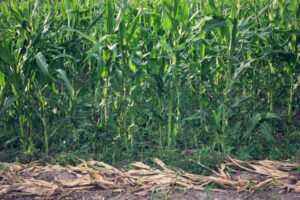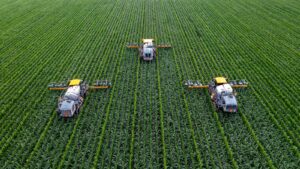Embarking on a farming venture necessitates a strategic choice of animals to rear, pivotal for ensuring a profitable and manageable operation. The decision hinges on the individual’s capacity to manage various species, with some animals requiring minimal care and others demanding extensive attention and resources.
Easiest Farm Animals to Raise
- Pekin Ducks: Renowned for their meat and large eggs, Pekin Ducks are a valuable asset to any farm. They thrive in confined spaces, making them an optimal choice for beginners;
- Rabbits: With their minimal space requirements and diverse diet, rabbits stand out as an economical and manageable option for novice farmers;
- Chickens: Universally recognized for their low maintenance needs, chickens provide eggs and meat, constituting a cost-effective start to farming;
- Goats: Though slightly more complex, goats are versatile, providing meat and dairy products, and can be managed with intermediate experience;
- Cows: Offering milk and meat, cows demand more land but remain a feasible option for those with adequate space;
- Honey Bees: Often overlooked, honey bees are low-maintenance yet productive, offering honey as a profitable commodity;
- Sheep: Efficient in converting grass to meat and wool, sheep require limited space and can significantly contribute to farm income;
- Fish: Aquaculture presents a unique avenue for farming, with species like tilapia being relatively straightforward to cultivate.
The Challenges of Raising Certain Farm Animals
Certain farm animals pose greater challenges, often due to specific care requirements or economic factors:
- Nigerian Dwarf Goats and Bulls: Notable for their handling difficulties and lower economic returns;
- Horses and Donkeys: Require specialized knowledge and care;
- Camelids: Demand specific environmental and dietary conditions;
- Sheep: While beneficial, sheep can pose fencing challenges and are susceptible to parasitic infections without proper management.
Essential Tips for Maintaining Animal Health and Well-being
- Education: Acquire comprehensive knowledge about the animals you intend to rear;
- Start Small: Gradually build your farm to ensure each animal receives adequate care;
- Observe and Communicate: Learn to understand the needs and behaviors of your animals;
- Environmental Control: Ensure a conducive environment for the animals, particularly the young ones;
- Nutrition and Health: Prioritize the provision of nutritious feed and clean water, alongside regular health checks;
- Protection: Safeguard your animals from predators and diseases;
- Social Structure: Maintain the natural social groups of your animals to promote their well-being;
- Technological Support: Utilize agricultural software for efficient farm management.
Comparative Table: Easiest vs. Most Challenging Farm Animals to Raise
| Criteria | Easiest Farm Animals | Most Challenging Farm Animals |
|---|---|---|
| Space Requirements | Minimal (e.g., Rabbits, Ducks) | Extensive (e.g., Cows, Camels) |
| Maintenance Level | Low (e.g., Chickens, Honey Bees) | High (e.g., Horses, Nigerian Dwarf Goats) |
| Economic Return | High (e.g., Eggs from Chickens, Honey from Bees) | Variable (e.g., Bulls may have less economic return due to handling difficulties) |
| Care and Handling | Easy, suitable for beginners (e.g., Sheep, Goats) | Requires experience and knowledge (e.g., Donkeys, Camelids) |
| Health and Wellness | Generally robust with proper care (e.g., Fish, Rabbits) | Prone to specific issues requiring vigilant management (e.g., Sheep with parasitic infections) |
| Social Needs | Low to moderate, easily met (e.g., Bees, Chickens) | High, requiring complex social structures (e.g., Horses, Donkeys) |
The Balanced Approach to Farm Animal Management
When venturing into the agricultural domain, the choice of farm animals constitutes a pivotal decision influencing both the sustainability and profitability of the farm. Beginners often gravitate towards animals that promise ease of management and substantial economic returns. However, a balanced approach, acknowledging both the rewards and challenges inherent in animal farming, is essential for long-term success.
This balanced approach entails a strategic selection of animals, blending species that offer immediate economic benefits with those that contribute to the ecological and social fabric of the farm. For instance, while chickens and rabbits may provide quick returns through egg production and meat, respectively, integrating more complex animals like goats or sheep can enhance the farm’s diversity, leading to improved soil health and pest control through their natural grazing behavior.
Moreover, adopting a mixed farming model can buffer against market fluctuations, ensuring a steady income stream. It also fosters a more resilient agricultural ecosystem, capable of withstanding environmental and economic challenges. Therefore, aspiring farmers should consider not only the ease of raising certain animals but also their long-term impact on the farm’s ecological balance and economic stability.
Conclusion
Selecting the right farm animals is crucial for anyone venturing into agriculture. By starting with species that are easier to manage and gradually moving to more challenging ones, beginners can lay a strong foundation for a thriving farming business. Coupled with dedication to animal health and well-being, farmers can achieve a harmonious and productive farm ecosystem, contributing to a rewarding agricultural journey.











